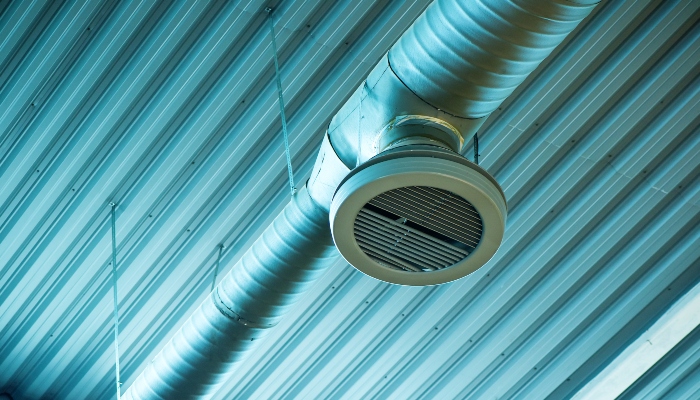A workplace inspection is a critical examination of the different aspects of the workplace, including processes, people, productivity, and risks. It is conducted to prevent the occurrence of incidents, injuries, and illnesses that could disrupt operations and incur unnecessary and potentially hefty expenses. Through regular inspections, possible problems are identified, underlying causes are determined, and corrective action is recommended and implemented. This measure helps control the risks and mitigate losses in the workplace.
One of the most overlooked workplace inspections is the ventilation system. Ventilation is the exchange of "stale" indoor air with "clean" outdoor air. There are two means of ventilation, mechanical and natural. In most homes, natural ventilation through the opening of windows is used. In larger establishments, such as offices and other workplaces, a mechanical ventilation system is installed.
The ventilation system removes or reduces airborne contaminants. During this COVID-19 pandemic, the importance of a well-functioning ventilation system has proved to be of utmost importance. The air exchange provides a continuous supply of fresh air, regulates the temperature and humidity in an enclosed space, and reduces potential fire or explosion hazards.
To ensure the system is functioning properly, a ventilation inspection should check the following:
Supply Air System
The supply air system ensures that your workplace has a consistent flow of fresh air. An insufficient inflow of oxygenated air causes an increase in carbon dioxide saturation. This, in turn, leads occupants of the space to feel lethargy and experience difficulty breathing.
Extract Air System
Built alongside the supply air system is the air extract system. It ensures that contaminated air is eliminated from your workplace while fresh, clean air is brought in. This system includes fans that facilitate the air exchange, ducts that allow the movement of air from one area to another, and air cleaning devices and filtration systems that purify the air.
Duct Work
Another essential part of the ventilation system is the ducts. Ducts are branching networks of tubes that carry air throughout your workplace. They may be made of sheet metal, fiberglass, or other materials.
As air ducts carry moving air, they also allow contaminants such as dust to settle in their tubes. Air ducts must be kept free of blockages and inspected for structural issues. Any blockages in the ducts can lead to filthy air and air conditioning inefficiencies. Air conditioning inefficiencies may lead to an increase in power consumption.
Air Change Rates
The air change rate is a measure of airflow. It indicates the speed at which all the air inside your workspace is replaced by clean air. The volume of fresh air required for the proper ventilation of your area is determined by its size, the use of the space, and the number of people occupying it. An inspection ensures that the volume of clean air supplied to your workplace will sustain the headcount of people in the area.
Air Filter
Due to the pandemic, even homes have installed an air filtration system. There are tons of air filters to choose from. Invest in a reputable brand that will deliver the best filtration for your space. Since they remove dirt and other particles from the air, clean your air filters regularly and replace filter parts to ensure their efficiency and effectiveness.
Ventilation System Inspection may be a tedious task. Worry no more. The Checker software was developed to help you easily and efficiently inspect your workplace, including your Ventilation System. Our extensive inspection library contains hundreds of customizable checklists for you to choose from. Subscribe now.











